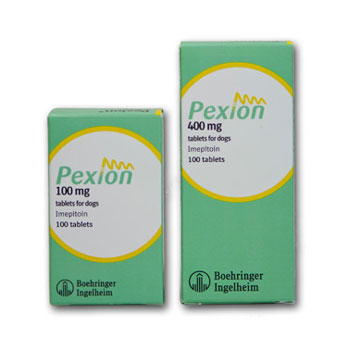
5
4
3
2
1
0
0
0
0
0
0
ratings
over the past year
For the reduction of the frequency of generalised seizures due to idiopathic epilepsy in dogs for use after careful evaluation of alternative treatment options. Oral administration at a dose range of 10 mg to 30 mg imepitoin per kg bodyweight twice daily, approximately 12 hours apart. Each tablet can be halved for appropriate dosing according to the individual bodyweight of the dog. Any remaining half-tablet should be used for the next dose. The required dose will vary between dogs and will depend on the severity of the disorder. The recommended initial dose of imepitoin is 10 mg per kg bodyweight twice daily. Initiate therapy using the bodyweight in kg and the dosing table. If seizures are not adequately reduced following a minimum of 1 week of treatment at the current dose the supervising veterinary surgeon should re-assess the dog. Assuming that the veterinary medicinal product is well tolerated by the dog, the dose can be increased by 50 to 100% increments up to a maximum dosage of 30 mg per kg administered twice daily. Bioavailability is greater when administered to fasted dogs. The timing of tablet administration in relation to feeding should be kept consistent. Contra-indications, warnings, etc Do not use in case of hypersensitivity to the active substance or to any of the excipients. Do not use in dogs with severely impaired hepatic function, severe renal or severe cardiovascular disorders. The pharmacological response to imepitoin may vary and efficacy may not be complete. Nevertheless imepitoin is considered to be a suitable treatment option in some dogs because of its safety profile. On treatment, some dogs will be free of seizures, in other dogs a reduction of the number of seizures will be observed, whilst others may be non-responders. In non-responders, an increase in seizure frequency may be observed. Should seizures not be adequately controlled, further diagnostic measures and other antiepileptic treatment should be considered. The benefit/risk assessment for the individual dog should take into account the details in the product literature. The efficacy of the veterinary medicinal product in dogs with status epilepticus and cluster seizures has not been investigated. Therefore, imepitoin should not be used as primary treatment in dogs with cluster seizures and status epilepticus. Transition to other types of antiepileptic therapy should be done gradually and with appropriate clinical supervision. No loss of anticonvulsant efficacy (tolerance development) during continuous treatment of 4 weeks was observed in experimental studies lasting 4 weeks. Special precautions for use in animals: The safety of the veterinary medicinal product has not been tested in dogs weighing less than 5 kg or in dogs with safety concerns such as renal, liver, cardiac, gastrointestinal or other disease. The efficacy as an add-on therapy has not been demonstrated. Mild behavioural or muscular signs may be observed in dogs upon abrupt termination of treatment with imepitoin. Special precautions to be taken by the person administering the veterinary medicinal product to animals: In case of accidental ingestion especially by a child, seek medical advice immediately and show the package leaflet or the label to the physician. To prevent accidental ingestion of tablets, the cap of the bottle should be replaced immediately after withdrawing the required number of tablets for one administration. The following mild and generally transient adverse reactions have been observed in pre-clinical and clinical studies (in order of decreasing frequency): In rare cases polyphagia was reported at the beginning of the treatment, also hyperactivity, polyuria, polydypsia, somnolence, hypersalivation, emesis, ataxia, apathy, diarrhoea, prolapsed nictitating membrane, decreased sight and sensitivity to sound. A mild elevation in plasma creatinine and cholesterol levels has been observed in dogs treated with imepitoin; however these did not exceed the normal reference ranges and were not associated with any clinically significant observations or events. The use of the veterinary medicinal product is not recommended in male breeding dogs or in female dogs during pregnancy and lactation. The product has been used in combination with phenobarbital in a small number of cases and no harmful clinical interactions were observed. In case of repeated overdose of up to 5 times the highest recommended dose, central nervous system (CNS), gastrointestinal-related effects and reversible prolongation of the QT interval have been noted. At such doses, the symptoms are not usually life-threatening and generally resolve within 24 hours if symptomatic treatment is given. These CNS effects may include loss of righting reflex,